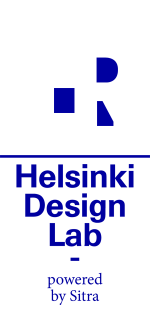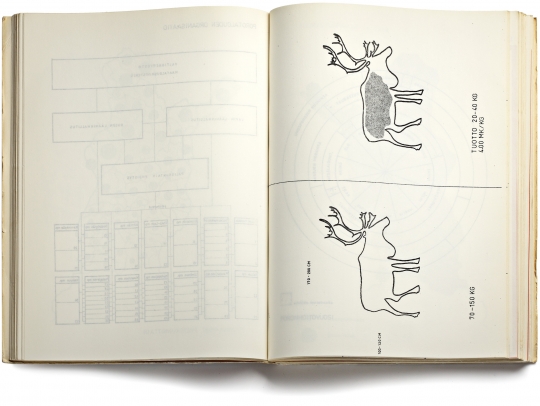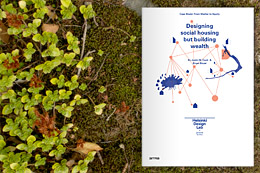All posts tagged 1968
Ambiguous Middle Phase continues but now with some glimmering of what lays ahead, beyond this chaotic period for HDL.
The week was bookended by a laundry list of activities related to the three Studios we're planning for summer: visiting a possible space right next to Delicato; interviewing students to join the team in supporting research roles; confirming studio members; interviewing two top talents experts on ageing; hunting down a map of internal migrations; and checking in with Gaia, who are preparing some futures projections. That's the sort of stuff that is continually churning, but I'm making note of it here so that we can look back in a couple months and remind ourselves of the rich crucible of everyday chores that created a background for deeper considerations about HDL.
On Tuesday Marco, Minna, and I took a day trip to Copenhagen to meet the fine people at MindLab and INDEX. Established as a design facility by three ministries (Employment, Taxation, Economic & Business Affairs), MindLab is one of the very few examples that we know of where design capability is explicitly integrated into government activities. They're been working to help government bodies improve the services they offer to the citizens of Denmark with a mix of design, social science, and public policy expertise.
After a very good and very hurried lunch we met with Kigge and Liza at INDEX:, the world's largest design award. It's set up as something along the lines of a Pritzker or Nobel for socially-beneficial "design to improve life." Naturally this high ambition for the contribution of design is something that we very much share. As is the recognition that to foster the ability of designers around the world to make a larger impact means very literally supporting them, enabling them to work without immediate clients. Or even markets. In particular it was nice to hear a bit about where their thinking is headed in the future. We're sworn to secrecy though, so stay tuned!
It's great to find allies – more and more of them every day. Not so long ago, if you said that you're interested in design with a social motivation and a practical imperative, you would have found very few people to share those aspirations with. Both of these discussions in Copenhagen underscored the fact that not only is this broader definition of design becoming a simple fact of the word's definition, but that there are more and more groups developing keen insights into implementation. What are the barriers to delivering improvements? How do we rethink the structure of design practice to open new opportunities? Who can designers involve in their work to benefit from expanded expertise on making things happen?
This is exciting to us because the design community is finally beginning to answer 50 year old questions. We're making those visionary "what ifs" from the 1960s into "why nots" – and "why not" is a much more operable question.
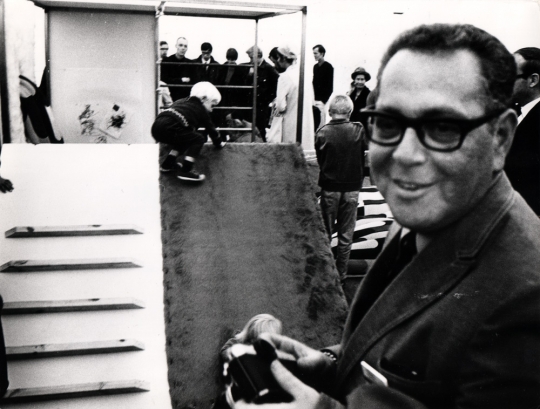
Victor Papanek in front of a prototype learning environment for children at HDL 1968. Photo by Kristian Runeberg.
With my laptop battery dying, I'll close with a quotation from HDL 1968 by Victor Papanek, the father of green design. It's unusual to see him praise the consumer products industry, but here his message is more about bootstrapping than cars. Replace "industrial designer" with "strategic designer" and this quote pretty much sums up the transition we're experiencing right now, as design is increasingly integrated as a core competency in governmental-scale problem solving.
If we go back to the history of the design profession we find that it started in the late twenties... around 1927, 1928, 1929 is when industrial design began in the United States.
It started by someone saying "I am an industrial designer." And then going around to radio companies, to electric companies, to truck people and so forth saying "I am an industrial designer, and I can do this and this and this and this."
And the companies were sometimes impressed and hired this man, be he Raymond Loewy or anybody else, and the same people are still working for the same companies.
Suomenlinna, Helsinki. July 17, 1968.
We agree with Victor: it takes a daring few to open new areas of opportunity!
We've been digging into the case study content. Justin and I have been working on drafting up case studies of the various projects we visited in November. Thankfully there were two of us because it's very helpful to have two sets of notes so as to provide a complete picture of visits and interviews. Also, this must be journalism 101, but it really does make a big difference to review and transcribe notes as soon as possible after an interview. Next time we do a round of case study visits we will definitely build in more time for processing and documentation.
Minna and I had the great pleasure of visiting Jaakko Ihamuotila and Yrjö Sotamaa in their respective homes to interview them on video about their roles as organizers of the 1968 event, which was HDL's predecessor. Both of them mentioned the Cop15 proceedings in Copenhagen to illustrate how it has taken us 40 years to come back to a discussion that was quite active in the late 60s and early 70s.
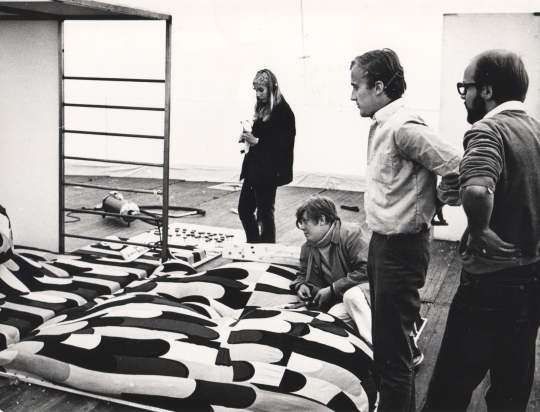
Contemplating an environment for Mentally Handicapped Children at HDL 1968. Photo by Kristian Runeberg.
I was also encouraged to hear both Jaakko and Yrjö mention the important role played by two design exercises held at HDL 1968. Participants were asked to collaborate on the design and prototyping of two items which offered an opportunity for ideas to be applied toward practical needs. I'm hoping that there was not an intended connection between the two projects – a mobile reindeer slaughter facility and an educational environment for mentally handicapped children – but those specific choices are a mystery that we'll chalk up to the magic decade that was the 1960s.
The more we introduce new people to HDL the more we refine the sequence of documents that progressively explain the project. I've organized a folder on the server with versions of our project explanation in two sentence, one page, and five page versions. These are critical to have on hand at a moment's notice and we continually refine them as the necessary focus shifts and details become more concrete. This week we put these documents to work in meetings with the Ministry of Education, Foreign Ministry, and Aalto University who will all be contributing to HDL 2010 in varying ways. Lots more of these sorts of meetings in the coming month or two.
We confirmed one of the participants in our Sustainability studio. This is an important focus for us leading up to the holiday.
Speaking of which, we took a long lunch on Tuesday for our team Joululounas ("Christmas Lunch") which reminds me that next week is the last before the holiday. There's a lot to do before we close out the year but it's feeling manageable.
Besides, we seem to work better under pressure anyways.
As a first step towards shaping HDL 2010 we have been spending a lot of time in the archives. Not only is there a wealth of content from 2008 (view some of the videos if you need a reminder) but quite a bit as well from a 1968 precursor to HDL. Indeed, the cultural and design milieu of 1968 was surprisingly similar to our own. Then, as now, designers were striving to locate themselves amongst business people, politicians, and other professionals in an attempt to work out more effective ways of addressing the significant problems of the day.
Check out some of the archival materials we've posted to find a little inspiration. I would also like to suggest that you add this site to your feed reader so that you're notified when we update the site. It's going to be an exciting year of planning and preparation - more soon!
